► How Mini is electrifying its entire range
► Plant Oxford will build the next EV after all
► We reveal Mini electric plans in detail
The new-generation Mini Electric will be built in the UK after all. CAR exclusively revealed this in March 2023, and it’s now been confirmed by both BMW Group and by the UK Government.
The Plant Oxford factory will switch over to build the new Mini Cooper Electric hatch and new Aceman small SUV from 2026, on top of combustion engine versions of the Mini hatch from 2024. BMW Group says it’s invested £600m in its UK facilities at Oxford, as well as its facilities in Swindon and Harris Hall.
It’s great news for UK plc, with tooling being installed to build models underpinned by the new A0 architecture shared with Great Wall Motor: the new Ora Funky Cat is based on this components set. The all-new electric Mini Cabriolet, which goes into production in 2025, will also be offered as a zero emissions model.
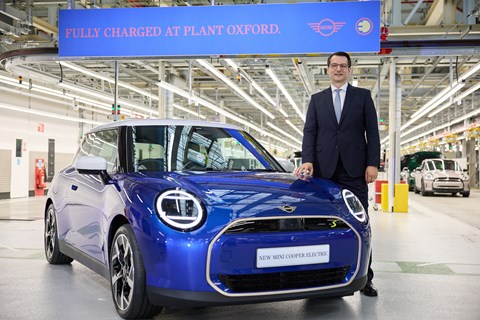
BMW Group board member for production, Milan Nedeljković, said: ‘With this new investment we will develop the Oxford plant for production of the new generation of electric MINIs and set the path for purely electric car manufacturing in the future.’
Prime Minister Rishi Sunak added: ‘BMW Group’s investment is another shining example of how the UK is the best place to build cars of the future. By backing our car manufacturing industry, we are securing thousands of jobs and growing our economy right across the country.’
REVEALED: Mini’s next five years! CLICK TO READ AT CAR’S EXCLUSIVE MEMBERS’ WEBSITE
But didn’t BMW say Plant Oxford would lose the Mini Electric?
Mini boss Stefanie Wurst (below, with new Countryman) said in autumn 2022 that, while the next Mini Cabriolet would return to Oxford (it’s currently assembled in the Netherlands), the next wave of electric cars were set to be built in China.
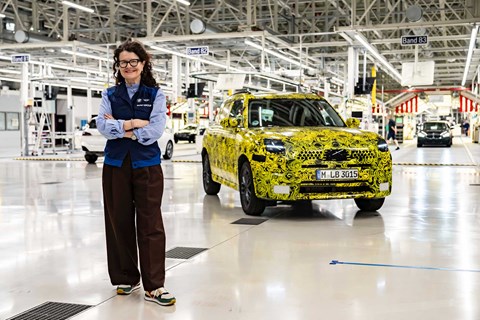
That’s certainly true: BMW has established a joint-venture with Great Wall Motors (GWM) called Spotlight Automotive, and production of the Aceman crossover is confirmed for the Jiangsu factory.
However a source told CAR that with Mini’s volume target rising from 293,000 to 500,000 annual sales by 2030, and with Mini pledging to be all-electric by the end of that year, it would need more electric factories.
Other plants in the BMW network were invited to make a case for investment, and Plant Oxford made the winning argument.
More background on Mini’s plan to go electric: new products and future strategy revealed
The first-generation Mini Electric (below) was very much a v1 and we can expect to see future generations of battery-powered Mini innovate more and more. And it won’t be a single electric model: a raft of Minis, in every which size and shape, are preparing to plug in.
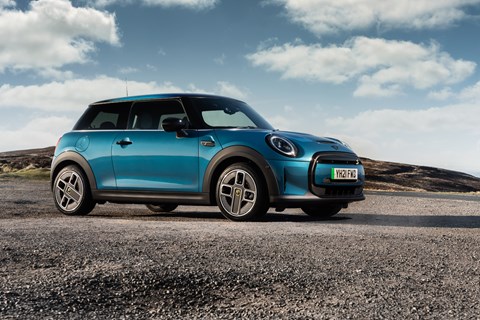
Mini says it’s going all-in on sustainability. Its next-generation cars won’t feature any leather in their interiors, and they’ll do away almost entirely with chromed plastic trim. The brand will also reduce the number of components in its cars in an effort to help preserve resources. The design drive operates under the heading of Charismatic Simplicity. The Germans do love a pithy tagline…
There’s a lot of change on the horizon. The next-generation three-door MINI hatchback will be slightly smaller than the model it replaces, and it’ll be launched as an electric car primarily – although there will be a petrol-engine model available. That’s a marked difference from the brand’s current “petrol-first” attitude towards the car.
CAR Magazine spoke to Wurst’s predecessor as Mini boss, Bernd Körber, back in 2021 and he revealed that petrol-powered versions of the next Mini hatchback won’t stick around forever – they’ll only be on sale until 2025. ‘But here’s the surprise,’ he said. ‘The visual difference between the two cars will be hard to spot. How come? Because we won’t mess with our prime icon. A Mini is a Mini, no matter whether it is battery- or petrol-powered.’
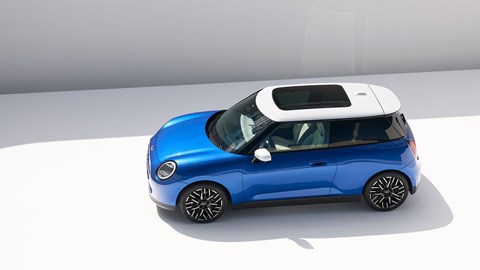
What’s going to happen to the five-door variant, you ask? It’ll soldier on in combustion-engine form for the time being – but there won’t be a battery-operated equivalent.
New Countryman includes EV version
Mini’s next-generation Countryman takes another leap of faith (at least where its badge is concerned), growing even larger than before. It’s also be the first Mini ever made in Germany, with production shifting to Leipzig. This is partly due to efficiency – the new Countryman will be based on the same platform as the latest BMW X1 and iX1, so it makes sense build both in the same plant.
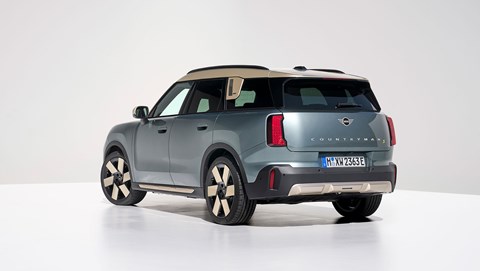
Körber said: ‘The plan is […] to position the bigger third-generation Countryman SUV about half a notch above the current model.’ He doesn’t see an issue with offering the car with both combustion and electric power either, stating: ‘Thanks to the modular layout, there should be no practical downside for either drivetrain option.’
What else is on the electric product plan?
Reading between the lines, it seems that Mini will use the second half of the decade to move its bookends further apart. At the lower end of the company’s line-up, we expect to see a smaller three-door electric hatch which takes influence from the Rocketman concept. This city car could eventually replace the barely larger next-generation three-door hatch.
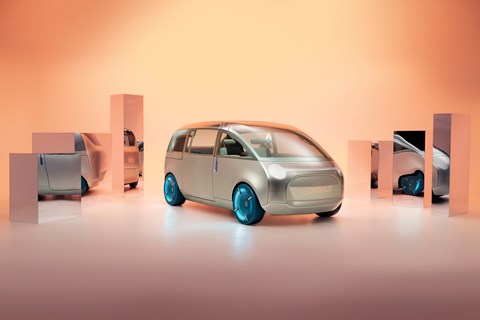
Mini’s throwing caution to the winds at the other end of the scale, as the company is expected to launch a production version of the outlandish Urbanaut MPV concept (above). According to an inside source, the Urbanaut will replace the current Clubman which is due to be discontinued in late 2023. The finished car will also feature the same sliding door and lounge layout as the concept.
Mini has already hinted that it’s experimenting with an all-electric JCW hot hatchback. The brand recently released some images of a prototype model covered in camouflage – and it was wearing the Mini GP’s massive rear wing and wild wheelarch extensions. No exhaust, though.
Körber said: ‘We know for sure that JCW will eventually also go fully electric, but perhaps we should kick off one more truly radical project before the high-voltage revolution strikes.’ Such a plan is sure to please petrolheads, but we’re not sure whether a more potent version of the Mini GP (perhaps with a manual gearbox and an even harsher chassis) would suit the brand’s new image.
Those close to Mini have told CAR magazine that this is an ongoing debate – and a lot of people working for the brand reckon the company should divert all its energy to the electrification effort.
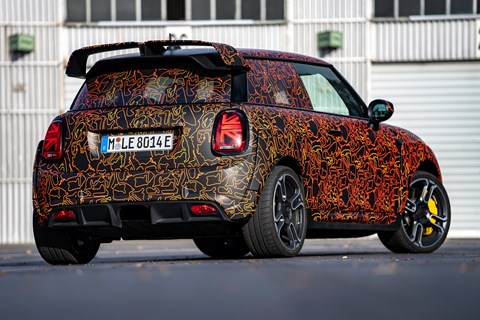
The 302bhp 2.0-litre four-cylinder petrol engine used in the current Mini GP has about reached its limit. Trying to screw any more power out of it would probably involve a lot of cost-prohibitive strengthening, which would put the car well out of reach of those that would buy it.
However, an electrified version of the car could easily produce between 350–400bhp – and a load of torque to go with it. To keep weight down (so as not to ruin the handling), insiders have suggested the car will be fitted with small 40kWh and 60kWh batteries, offering modest ranges of between 190–250 miles. A fast-charging 400V electrical system will also come as standard.
Read our Mini reviews here